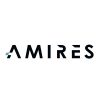Nanotechnology offer wide-ranging improvements to the field of cosmetics and personal care, most notably through the introduction of better testing and analytical approaches to the research of the functionality of applied products on the biological level, ultimately enabling the realisation of cosmeceuticals (i.e. the combination of cosmetics and pharmaceuticals).
The types of products developed on the nanometric scale in cosmetology are different from nanomaterials used in other industrial sectors. They differ by their form and their molecular structure, their mode of use and the way they interact with the environment. In essence, they are nanoemulsions and nanopigments:

- Nanoemulsions are found widespread in nature, such as milk. In cosmetics, they are in fact macroscopic preparations containing oil and water droplets reduced to nanometric size to increase the content of nutritious oils while preserving the transparency and the lightness of the formulas. Sometimes fragile active ingredients, like vitamins, are protected from air inside nanometre sized vesicles or liposomes that release the ingredient upon contact with the skin at the time of application. Nanoemulsions therefore do not cross the skin barrier.
- Nanopigments are naturally occurring minerals, such as titanium dioxide or zinc oxide. Titanium dioxide is the best known nanopigment and is renowned for its capacity to absorb UV light thus protecting the skin from cancers induced by over exposure to the sun. Moreover, titanium dioxide is an inert material and a reference of non-toxicity. This is why it is largely used in food, in consumer goods, and in dental and oral hygiene products, like toothpaste.
One of the most widely recognised and used nanotechnology applications in personal care is the incorporation of nanopigments in sunscreens, providing a three-fold improvement to the traditional chemicals and materials utilised as UV-filters:
- Improved protection from UVB and UVC radiation (i.e. UV light of shorter wave-lengths).
- Improvement of the durability of sunscreens, in some cases making one application per day sufficient, by also protecting other ingredients in the sunscreen from degradation in the sun.
- Provision of the properties of a sun-block without the opacity, allowing for the highly protective nanotechnology-based ingredients to be added to every-day cosmetics.
In sunscreen lotions, nanopigments are typically present in large clusters ranging in size from 300 to 600 nanometres that ensure optimal protection of the skin.



















